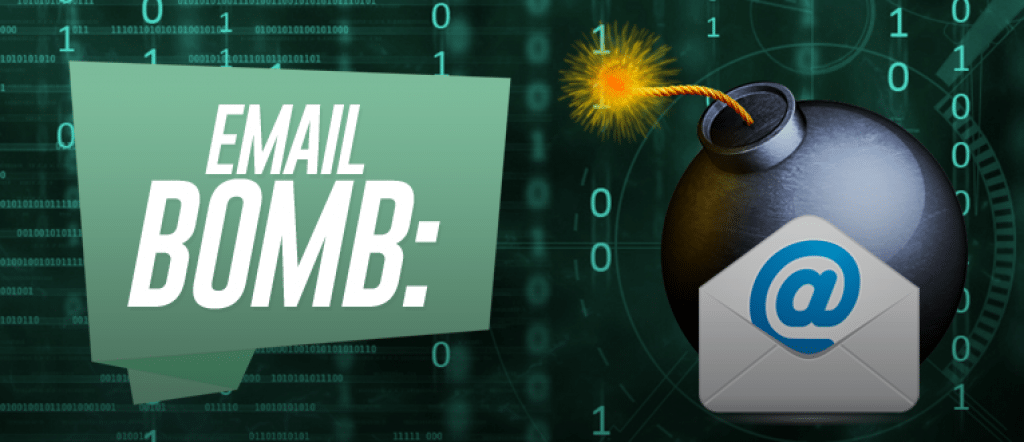What’s an email bomb?
In the world of computers and networks, a “mail bomb” or “email bomb” is a system that floods a particular email inbox or email server with messages – enough to possibly overload the system and cause it to stop working properly.
How does an email bomb work?
Multiple ways of sending email bombs exist, and they’re actually quite easy to achieve.
In fact, the frightening truth is that a search engine query can lead to specific instructions on how to pull off the process.
Most forms rely on a process known as DoS, or Denial of Service.
Those who use email bombs send hundreds or even thousands of emails to a particular destination.
To help conceal the source of the activity, many of these digital bombers will use more than one email account, which makes it tough for someone to track down a single source.
Some hackers also create viruses that can be spread from computer to computer, taking control of email accounts and using them to continue the mail bombing process.
There’s also “list bombing.”
In this method, a victim is unknowingly subscribed to email lists.
Some may even take a victim’s email address and post it in a form that is easily detected by malicious bots.
That could take the email address and bombard it with large amounts of spam or dangerous email attachments.
Email bombs can potentially send millions of emails to one target.
How are email bombs dangerous?
Email bombs not only cause problems for the one target at the center of the attack, but could also cause indirect inconveniences for other people who are using the same server as the targeted victim.
While mail bombs might simply be a nuisance to the victim, there’s also the potential for more severe problems.
Mail bombs could lead to your work account or professional email to be overloaded and, therefore, shut down.
If your email inbox is full because you’ve received hundreds or thousands of unwanted emails, the legitimate emails from people you know could be returned to the user.
A full email server could also hamper your ability to send emails.
And in some mail bombs, emails might contain malicious attachments like malware, viruses, worms or spyware.
Once these are opened, your computer and network are at risk of being compromised by criminal activity.
Preventing email bombing
- Use proxy servers. Proxy servers are defined as a “gateway” computer between your local network and a larger network, such as the Internet. With a proxy server computer being used, the proxy will filter messages and check for malicious content before providing information to the intended target or client.
- SMTP or Simple Mail Transfer Protocol is a protocol used in the sending and receiving of emails. It helps to authenticate the email exchange process.
- Check into mail filter applications. Popular applications for Windows include SpamKiller, Spam Buster, and Email Chomper; for Mac system, research SIMS, Mail Siphon, or EIMS.
- Consider using more than one email address for your different needs.
- If an email is targeted, consider suspending the account while you try to address the mail bombing problem.

